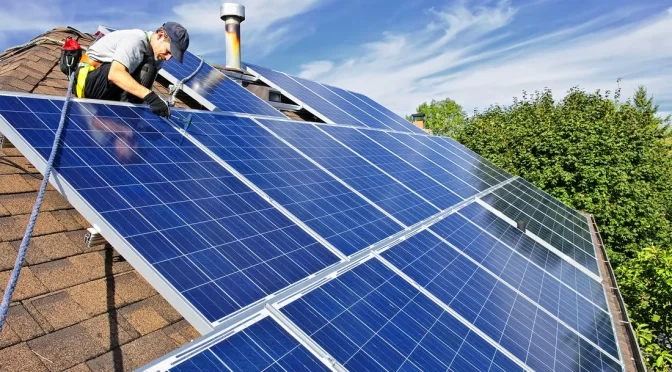The expansion of solar power in Europe is growing rapidly due to increased renewable energy ambitions and the need to reduce dependence on Russian gas. Statkraft’s Low Emissions Scenario now shows that Europe will have significantly more solar power by 2030 than expected before the war in Ukraine.
For the seventh year in a row, Statkraft’s analysts have made a comprehensive analysis of the global energy market towards 2050. Along with wind power, solar power is asserted as the crucial renewable technology to reduce the European Union’s dependence on Russian gas and cut emissions.
Statkraft’s new analysis estimates an average yearly increase of solar capacity in the EU of between 45 and 52 GW towards 2030. This is significantly higher than the 33 GW per year analysts expected before the invasion of Ukraine. It compares to a record 26 GW in 2021. Compared to other renewable energy technologies, solar power is cost-efficient and construction can take less than two years.
Solar power is seen as the winner in the energy transition. According to the report, it will become the world’s largest source of power generation around 2035.
Statkraft’s Low Emissions Scenario demonstrates that we don’t have to choose between solving the ongoing energy crisis or the climate crisis. The solution to both crises is the same: more renewable energy and more efficient energy use. For many countries, transitioning from fossil fuels to renewable energy also increases their energy self-sufficiency.
“In the Low Emissions Scenario, we see that the best measures to solve the ongoing energy crisis are the same measures that are crucial to fighting the climate crisis. A greater focus on energy security and energy self-sufficiency will also drive the green energy transition,” says Christian Rynning-Tønnesen in Statkraft.
According to the Low Emissions Scenario, renewable energy will account for almost 80 percent of the world’s total power generation in 2050. Solar power will be the world’s largest energy source, producing more than 21,000 TWh, equivalent to 80 percent of the world’s power demand today.
“In an energy system with much more weather-dependent renewable energy such as wind and solar, there is an increased need for flexible solutions that can help balance consumption and production. In Norway, hydropower’s unique ability to store water will provide both short- and long-term flexibility. Hydropower can be upgraded to achieve an even more important role in the energy system of the future,” says Christian Rynning-Tønnesen.
Increased use of renewable energy, combined with technological solutions available to ensure greater flexibility, are cornerstones of the energy transition. Wind and solar power will largely outcompete fossil competitors and become the dominant electricity sources, while energy storage solutions, such as batteries, will be essential to keep balance in the more intermittent system. Hydropower and hydrogen will continue to grow in importance as emissions-free and flexible resources, while increasingly interconnected energy systems also provide needed flexibility in the renewable-dominated energy system of the future.
Statkraft’s Low Emissions Scenario is an optimistic yet realistic scenario, where global energy-related CO2 emissions are reduced by 60 percent from today until 2050. The scenario will be within emission levels that can limit global warming to 2 degrees. An even faster transition is necessary to reach the 1.5-degree target.
“Energy security, demand for affordable energy, and the climate crisis all indicate that we should now accelerate the global energy transition. Electrification based on renewable power, and energy efficiency are key pillars,” says Christian Rynning-Tønnesen.


